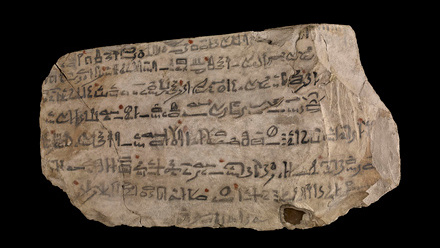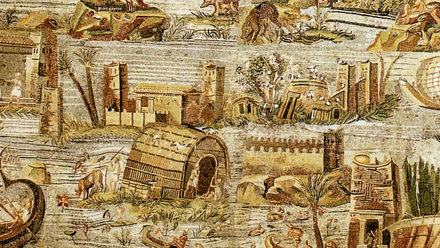Recordings will be made available for those unable to attend the live sessions!
Ancient Egypt was a land of myth. The many iconic features of pharaonic civilisation – pyramids, temples, hieroglyphs, and more – were shaped by a complex worldview made up of unique concepts and motifs. From the Nile Valley to the Delta, from the eastern desert to the western oases, Egypt was a place where gods and legends lay around every corner.
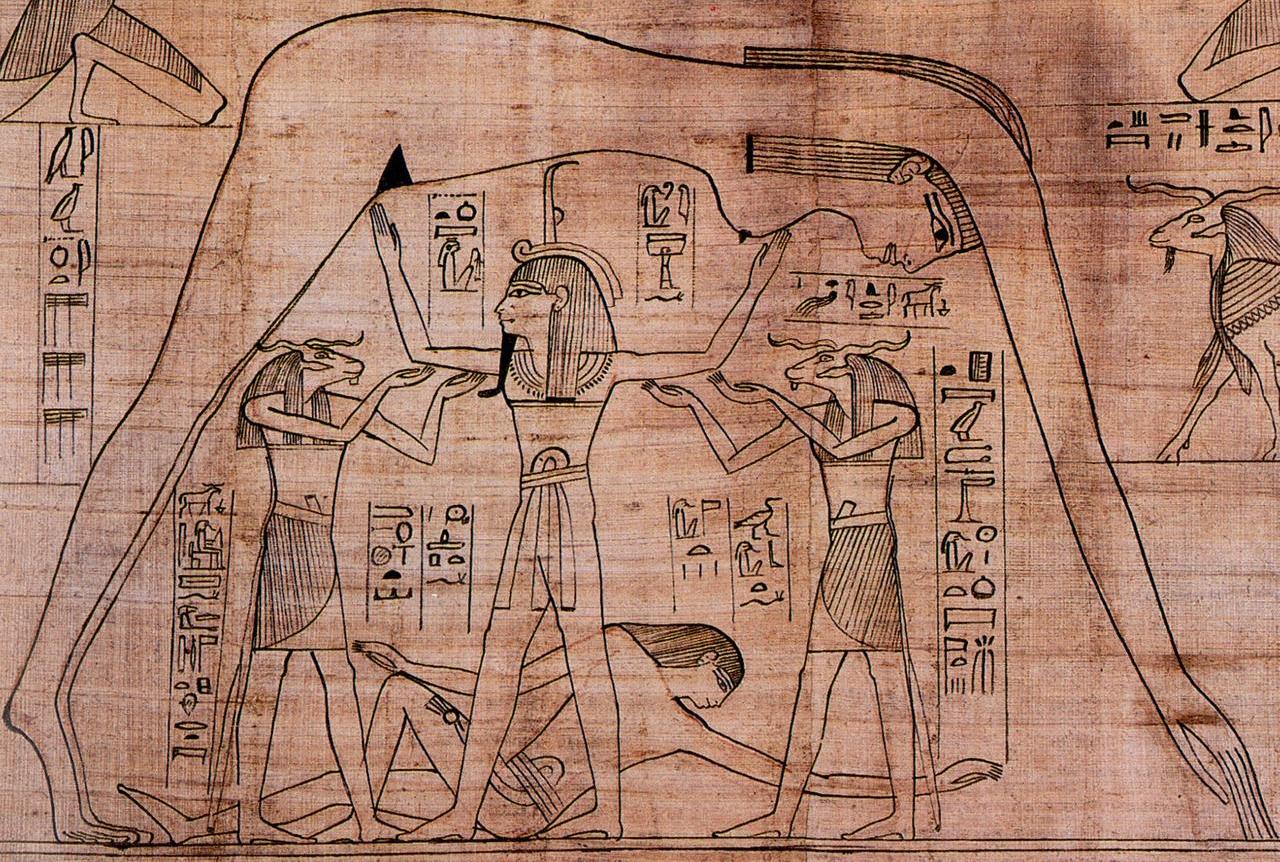
Shu separating Geb and Nut on the Greenfield Book of the Dead papyrus (BM ES 10554.87)
In this course, you will learn some of the fundamentals of Egyptian myth: how it works, key ideas and narratives, and the players involved. You will become familiar with Egyptian beliefs about the creation and functioning of the world and will consider how those beliefs have been reimagined and perceived across time. You will engage with a variety of sources – texts, art, and archaeology – to uncover some of the most important aspects of the ancient Egyptian cosmos. The material covers periods from the beginning of pharaonic civilisation (c. 3100 BCE) through to the present day, pertaining to sites across Egypt. By the end of the course, you will have a better understanding of the stories behind the symbols and imagery you might encounter in books, museums, or if you visit Egypt yourself.

The course is open to everyone, whether they are complete beginners in learning about ancient Egypt or already have some knowledge in the area. You will be provided with a summary of Egyptian chronology; we will briefly go through this in the first class. However, you may find it helpful to refer to this throughout the course if you are not familiar with the broad picture of ancient Egyptian history.
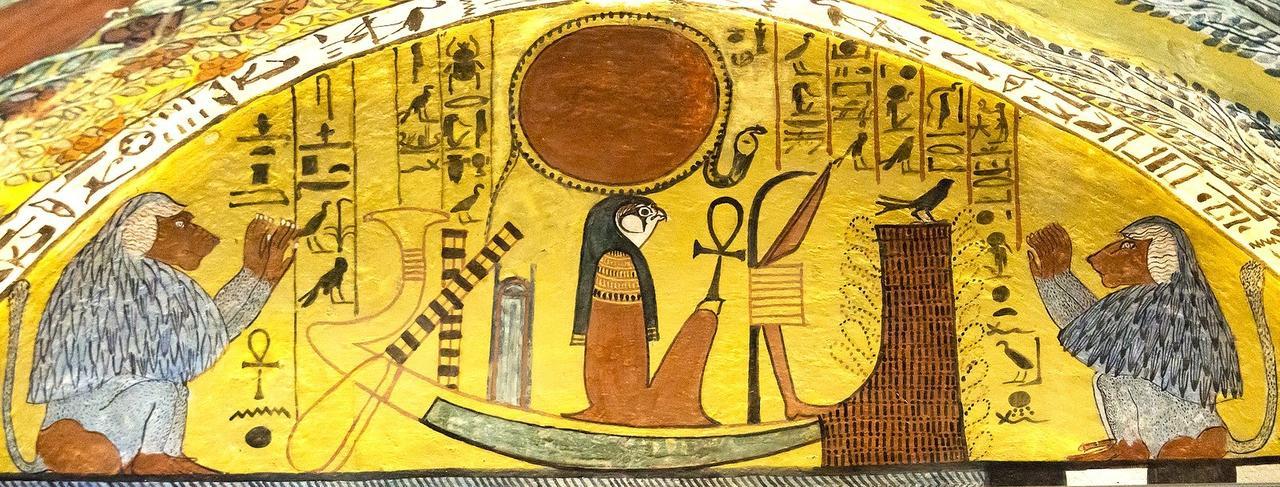
The sun god (Ra-Horakhty-Atum) in the tomb of Sennedjem (TT 1)
Course Outline
Please note that main content will be delivered between 18:00-19:30, though some optional participation (quizzes, Q&A, etc.) may continue beyond that time.
Thursday 2 May 2024, 18:00-19:30 (UK time)
Week One - Beginnings
In this first week, we will lay the groundwork for the course by sketching out Egyptian chronology and considering the function of Egyptian myth, before then looking at Egyptian accounts of the creation of the world.
Thursday 9 May 2024, 18:00-19:30 (UK time)
Week Two - The reign of the sun god
Once the world had been brought into being, there was a time when the sun god ruled on earth. This week we will look at some key mythological events from that time, as well as Egyptian ideas of the sun god’s continued role in maintaining the world through his daily journey.
Thursday 16 May 2024, 18:00-19:30 (UK time)
Week Three - The Osiris Cycle
One of the key narratives of Egyptian myth is the death of the god Osiris, his resurrection at the hands of the goddess Isis, and the subsequent struggle for the throne between Osiris’ son Horus and his brother (and murderer) Seth. This week we will look at some of the key elements of that saga, as well as some of the symbols and rituals connected to them.
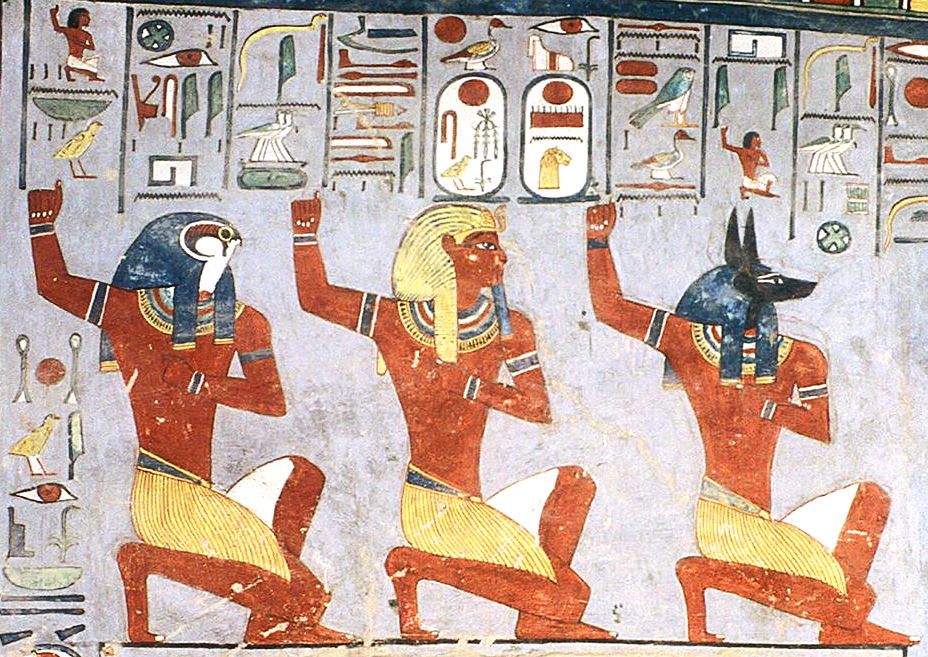
Ramesses I with the Souls of Pe and Nekhen (KV 11)
Thursday 23 May 2024, 18:00-19:30 (UK time)
Week Four - Myths of time and the cosmos
The ancient Egyptians’ world was structured by a variety of powers and forces, into which historical and political events were believed to fit. This week we will look at mythic concepts of time, of kingship, of maintaining the cosmic order, and how historical figures could become the stuff of legends.
Thursday 30 May 2024, 18:00-19:30 (UK time)
Week Five - Endings and afterlives
For the final week of the course, we will consider Egyptian beliefs about the end of the world, before considering the ‘afterlives’ of Egyptian mythology. How have other cultures (including our own) interpreted and reimagined Egyptian myth? Might ancient mythic elements have survived into contemporary cultural practices?
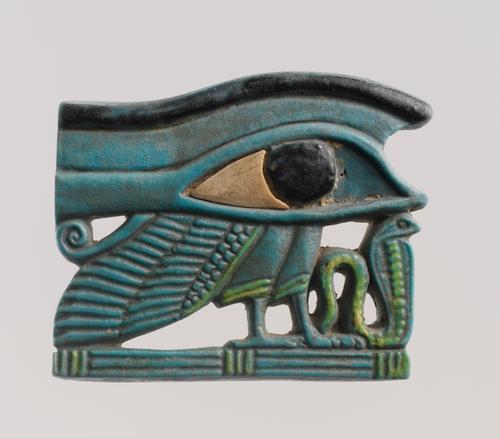
Wedjat eye amulet (MMA 17.190.1639)
Booking and information
Register for your place in advance using the link below. After registering, you will receive a confirmation email containing information about your booking. Reminders for joining the event will be sent by email closer to the start date. If you do not receive your email, then please check your junk folders before contacting the Egypt Exploration Society. The course will be held on our Zoom platform and attendees will be able to interact by asking questions, using the chat and polls. It is not necessary to have a working webcam or microphone for this course. The online course will be complemented by Google Drive, where resources will be uploaded.
Please ensure that you have read our guide to attending EES online events before the course begins.
Please email [email protected] to book this course after the start date. Late bookings will incur an additional administration fee.


